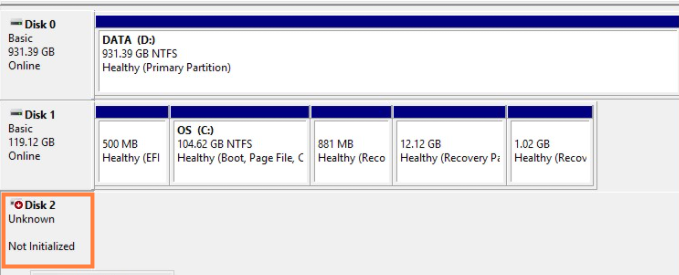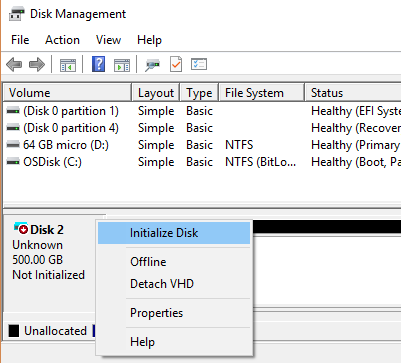

Or maybe you have a disk full of important files, and you don't want to erase the disk by initializing it. However, there's a good chance you've already tried this, and it didn't work. Solution: If the drive is brand new and just needs to be initialized, erasing any data on it, the solution is easy - see Initialize New Disks. It's also possible that the disk is having hardware problems or issues plugging in, but we'll get to that in a few paragraphs. Basically this means that the disk has never been initialized and formatted, or the drive formatting has become corrupted somehow.

If you have a disk that doesn't appear in File Explorer and is listed in Disk Management as Not Initialized, it could be because the disk doesn't have a valid disk signature. After Computer Management opens, go to Storage > Disk Management.ĭisks that are missing or not initialized, plus general troubleshooting steps.Type Computer Management in the search box on the taskbar, select and hold (or right-click) Computer Management, and then select Run as administrator > Yes.
#UNKNOWN DISK NOT INITIALIZED WINDOWS 10 HOW TO#
How to open Disk Managementīefore we launch into the tricky stuff, here's an easy way to get to Disk Management in case you're not there already: If you still need help, post a question there, or Contact Microsoft Support or the manufacturer of your hardware. If you get an error or something doesn't work when following these procedures - don't panic! This topic is just the first thing to try there's also a ton of info on the Microsoft community site in the Files, folders, and storage section about the wide variety of hardware and software configurations you might be dealing with.


 0 kommentar(er)
0 kommentar(er)
